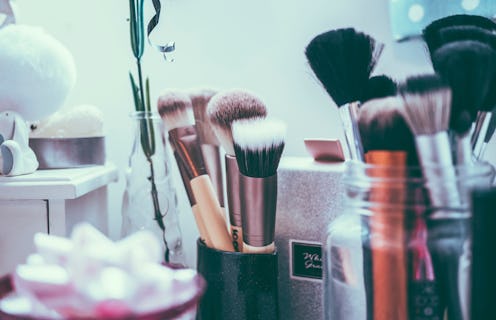In light of Monday’s verdict that Johnson & Johnson pay $417 million to a woman who claims to have developed ovarian cancer as a “proximate result of the unreasonably dangerous and defective nature of talcum powder” used in J&J’s baby powder, the question of whether baby powder is dangerous has been back in the news again. It isn’t actually baby powder in and of itself that’s causing concern; it’s baby powder made primarily of talc, which — despite baby powder’s name — is used by many adults in sensitive areas to prevent chafing or promote dryness. So what’s the big deal with talc? It’s…complicated.
As the American Cancer Society explains, the idea behind how talcum powder might be linked with ovarian cancer involves a very specific use of the stuff. If talc or a product containing talc is applied to your genital area in any way (whether it’s applied directly — what’s called perineal talc use — or whether it makes its way there via pads, condoms, etc.), the powder particles might be able to travel from your vagina all the way up to your ovaries. This may, as the New York Times put it, “set off inflammation, which is believed to play an important role in the development of ovarian cancer.” It’s similar to what happens if you breathe asbestos fibers — they make their way into your lungs, which can result in the development of lung cancer.
The concern over talc as a possible cause of ovarian cancer goes back to 1971, when a study conducted by British researchers first found talc particles in 10 ovarian tumors out of the 13 total tumors they examined. Then, in 1982, a study published in the journal Cancer by epidemiologist Daniel Cramer found a statistical link between instances of ovarian cancer and perineal talc use — for women who used talc either on pads or by dusting their perineum with it, his data showed an increased risk of ovarian cancer. And, as Bloomberg points out, 20 more studies published in the years since Cramer’s found that perineal talc use correlates with an approximate 33 percent increase in ovarian cancer risk.
However, the American Cancer Society notes that although a large number of studies have examined whether there’s a link between talc and ovarian cancer, “findings have been mixed, with some studies reporting a slightly increased risk and some reporting no increase.” Indeed, Luisa Dillner writing at The Guardian pointed out in 2016 that while a 2003 meta-analysis of 16 studies with a data pool of 11,933 women found a link between talc and increased ovarian cancer risk, a 2014 study of 61,576 women did not find the same link. Furthermore, both the Dillner and the American Cancer Society point out that a lot of studies examining this issue have relied on participants self-reporting their talc use, which isn’t the most reliable of methods.
One of the biggest issues isn’t even talc itself — it’s talc that’s been contaminated with asbestos. (There’s a reason I brought up asbestos earlier.) According to the FDA, asbestos is similar to talc in that it’s a naturally occurring silicate mineral; however, it has a different crystal structure than talc does. Talc and asbestos tend to be found in the same areas, which, prior to 1973, made asbestos contamination in talc fairly common. Asbestos is also a known carcinogen (while talc is not), which means the FDA “considers it unacceptable for cosmetic talc to be contaminated with asbestos.”
Because scientific literature had suggested a correlation between using cosmetics made of talc and the development of ovarian cancer. but hadn’t proven a conclusive link, the FDA conducted a survey between September 2009 and September 2010 examining both cosmetic-grade raw material talc and some cosmetics which contain talc as an ingredient that were on the market at the time. The study found “no asbestos fibers or structures” in any of the samples the researchers analyzed; however, due to the limitations of the study, the FDA arrived that the conclusion that, while the results were “informative,” they “[did] not prove that most or all talc or talc-containing cosmetic products currently marketed in the United States are likely to be free of asbestos contamination.”
So, the bottom line is that we don’t have a definitive answer about whether or not talc is an ovarian cancer risk. If you’re concerned and like to play it safe, though, there’s an alternative to talc: Cornstarch. It’s readily available; indeed, a lot of companies make talc-free baby powder out of cornstarch, including Johnson & Johnson. As Bloomberg points out, there are no studies that show any risk from cornstarch, although if you’re actually using it for babies, USA Today the importance of making sure your baby doesn’t inhale it. “If you elect to use it, try to keep it well localized to the diaper and away from any area that can be inhaled,” said Soma. “Use as little as possible, probably put it on your hands and transfer to the diaper area or gently sprinkle to the diaper area.”
